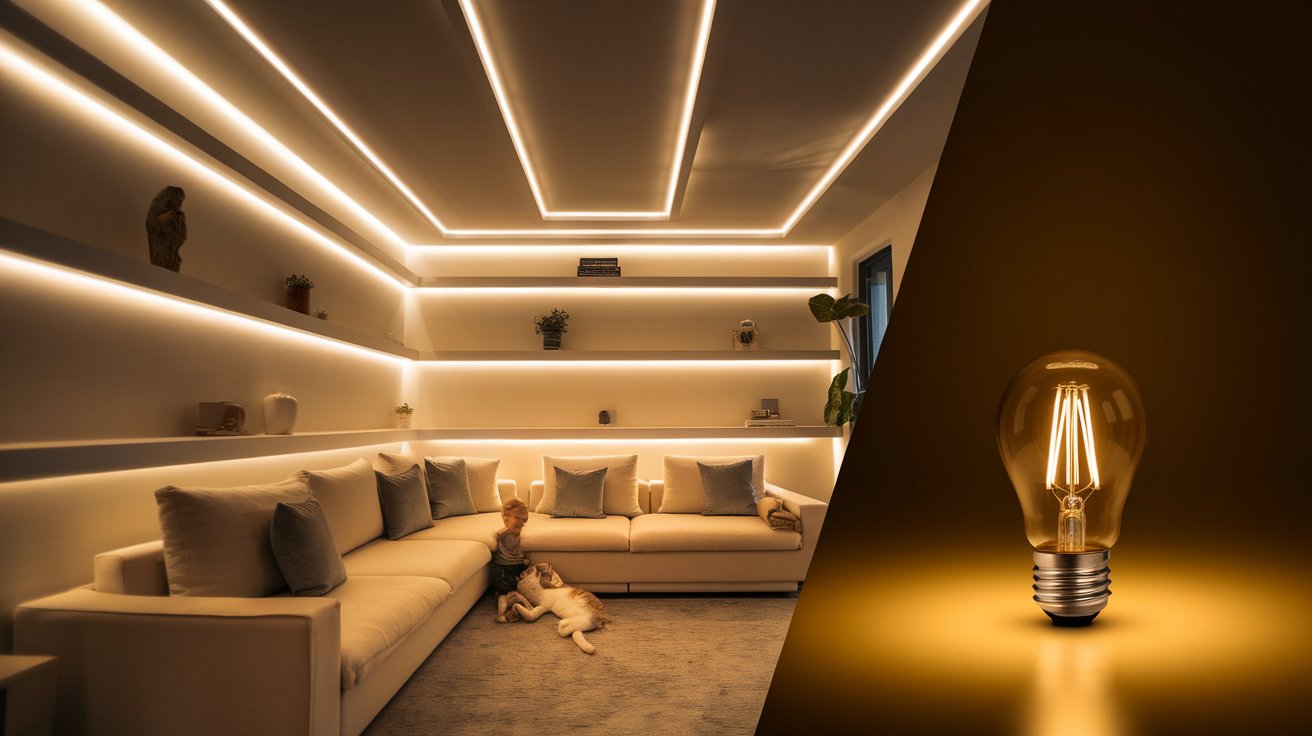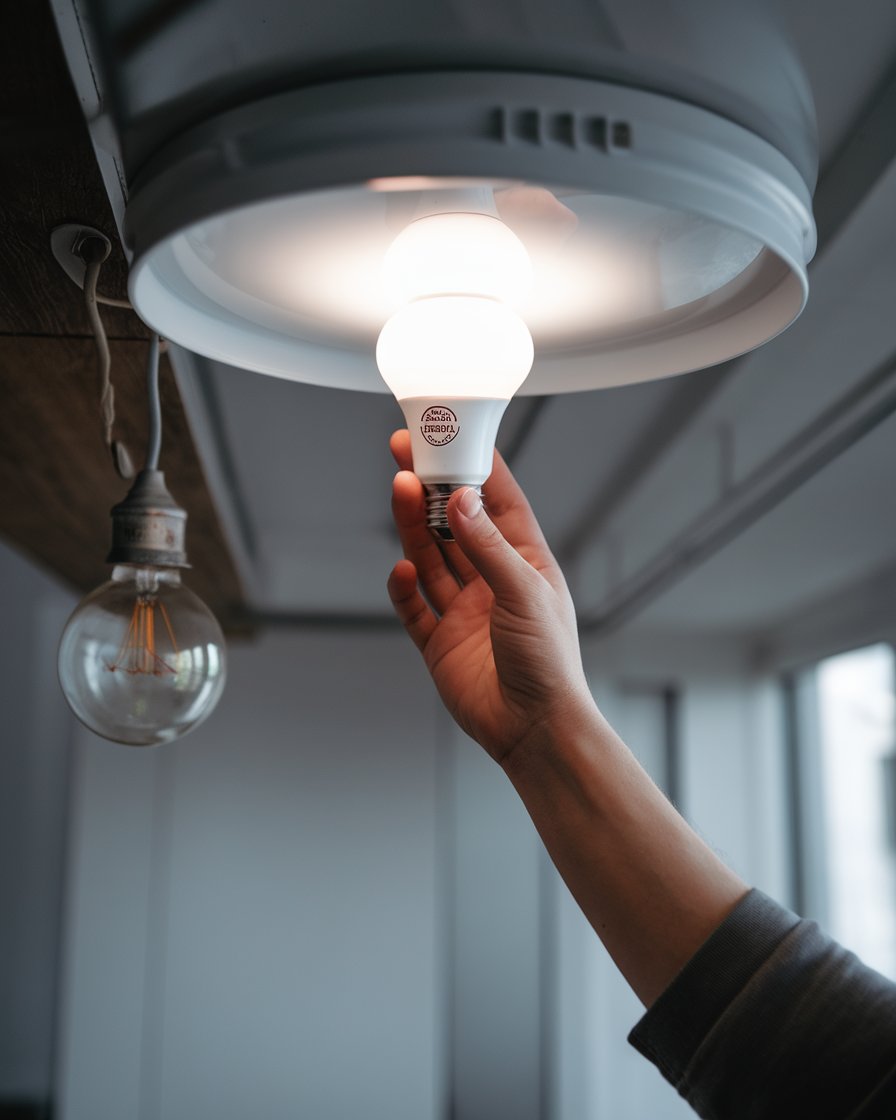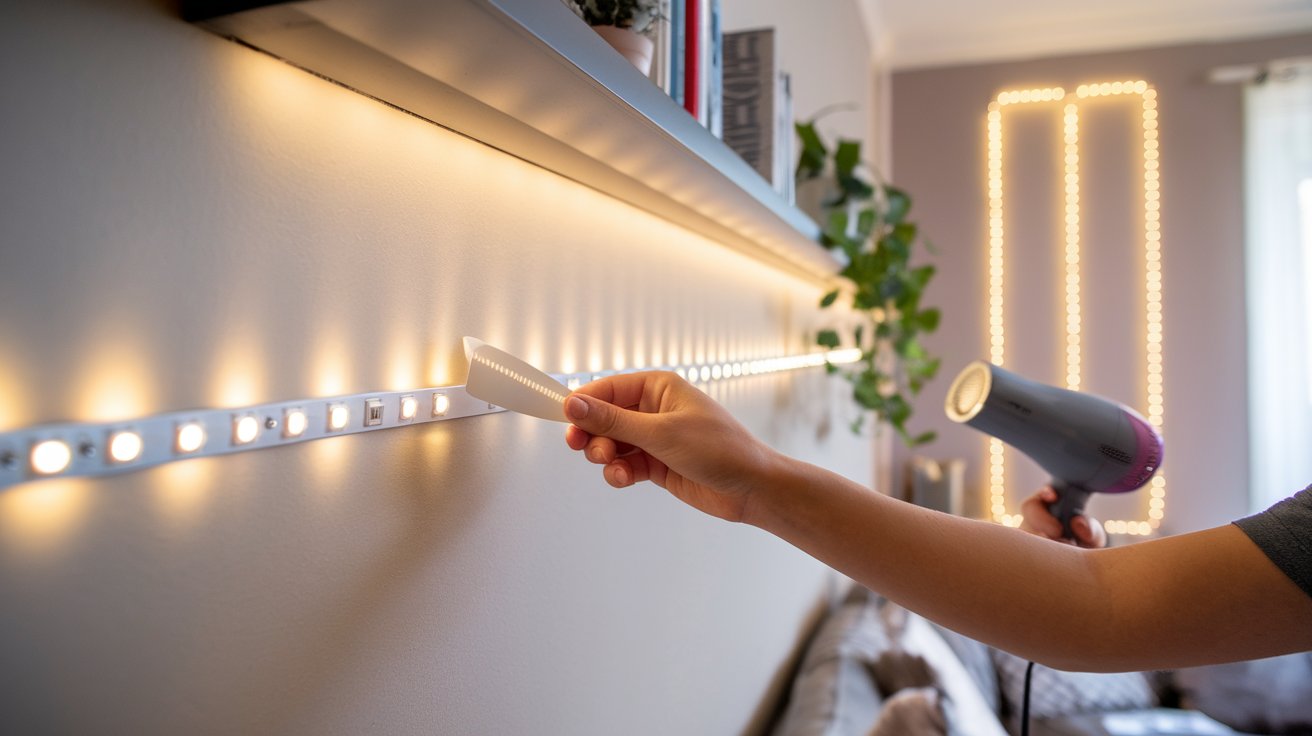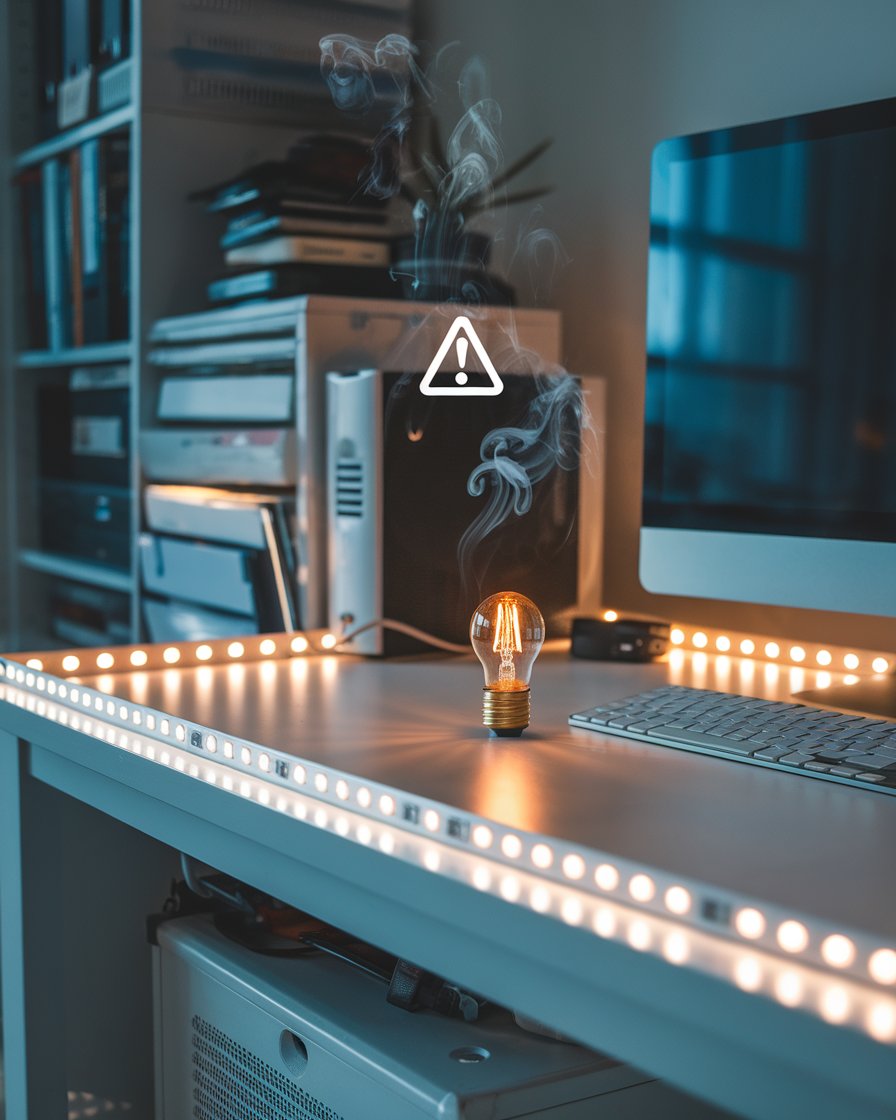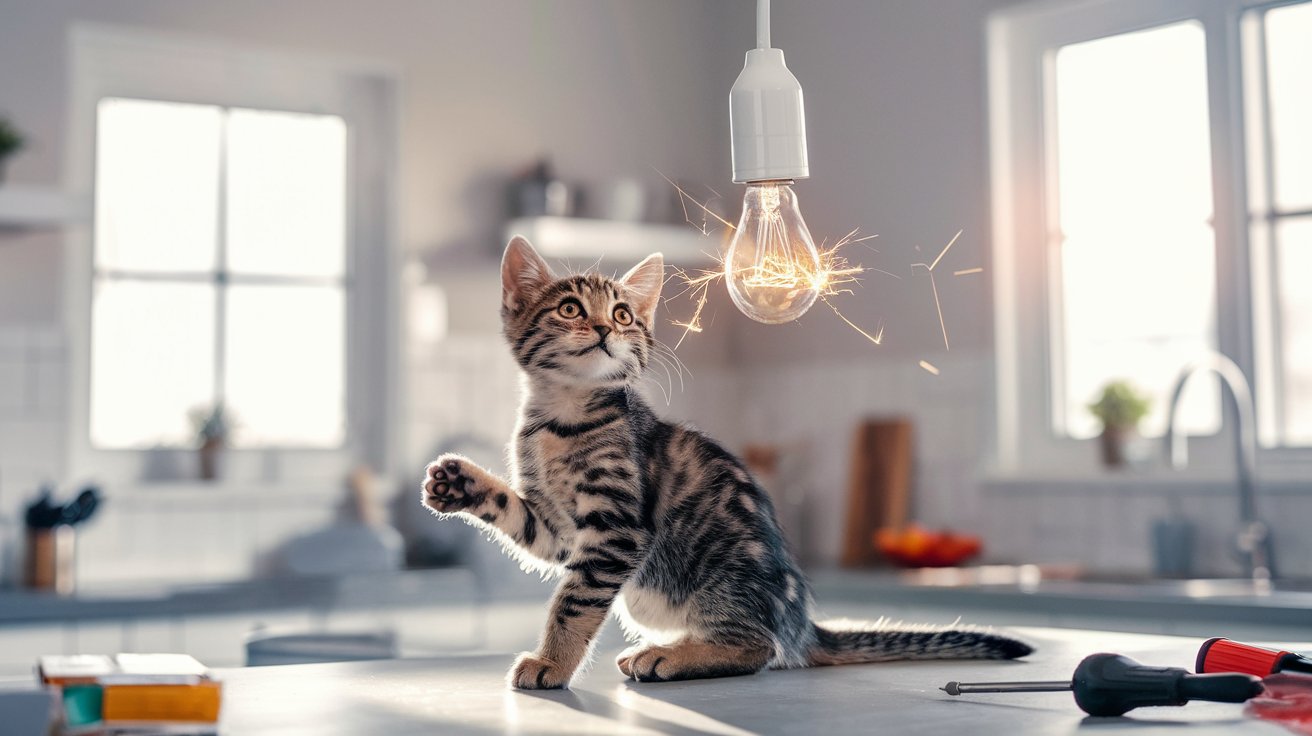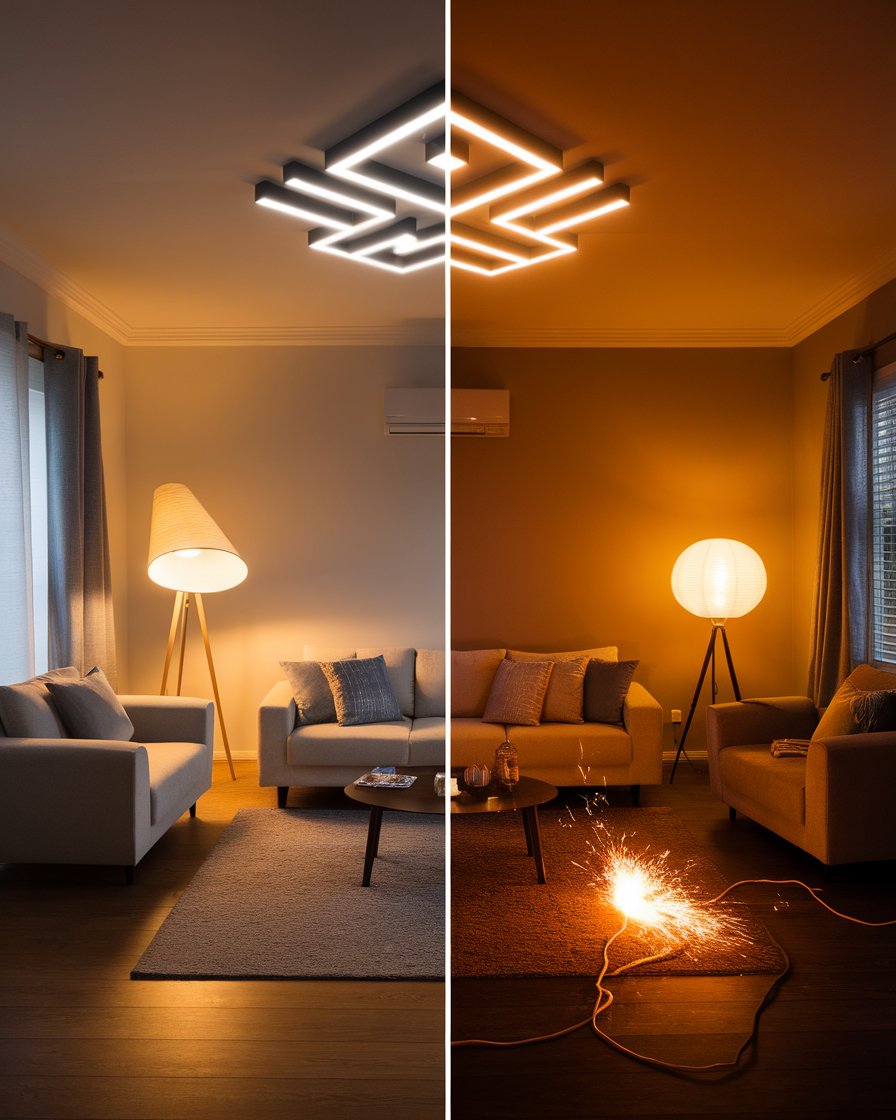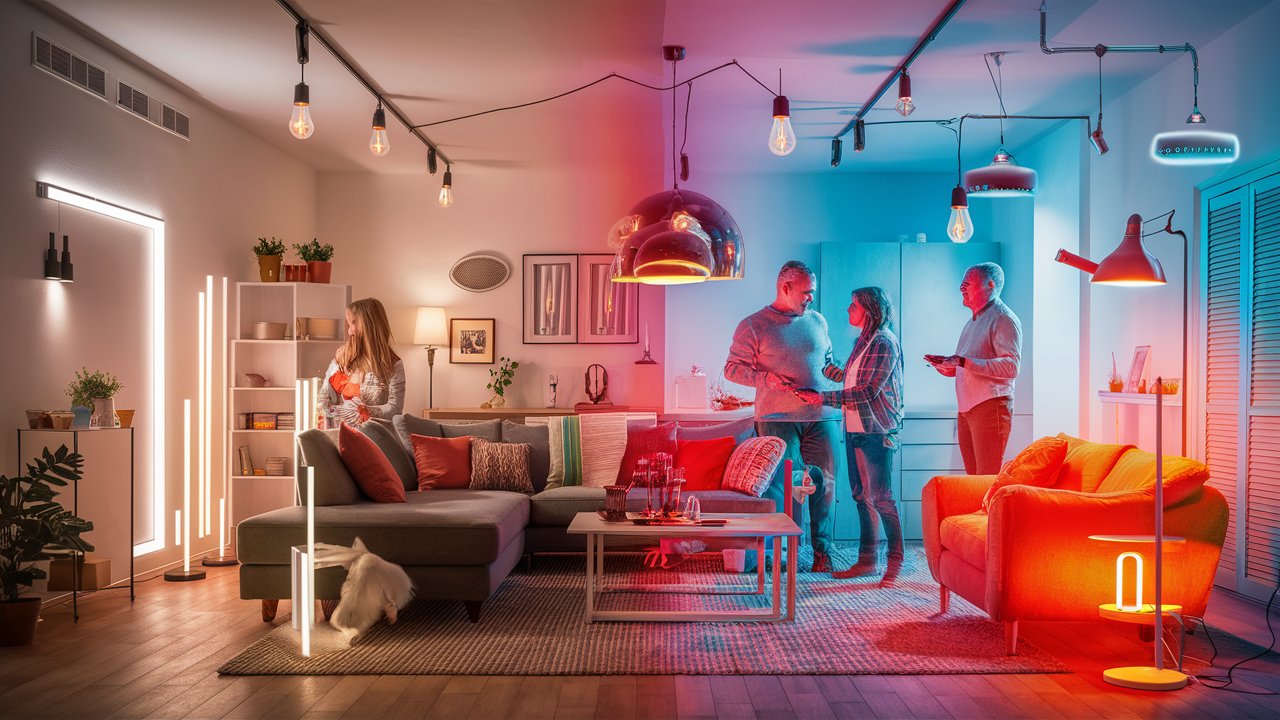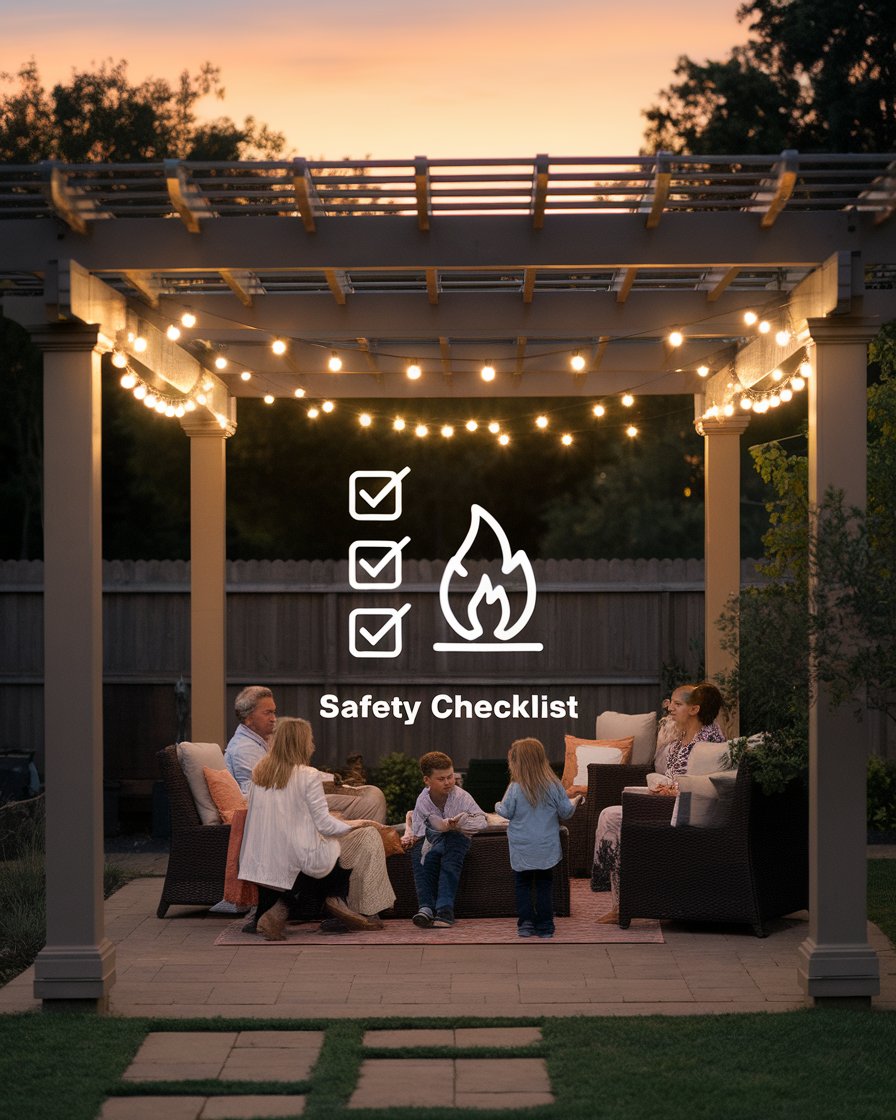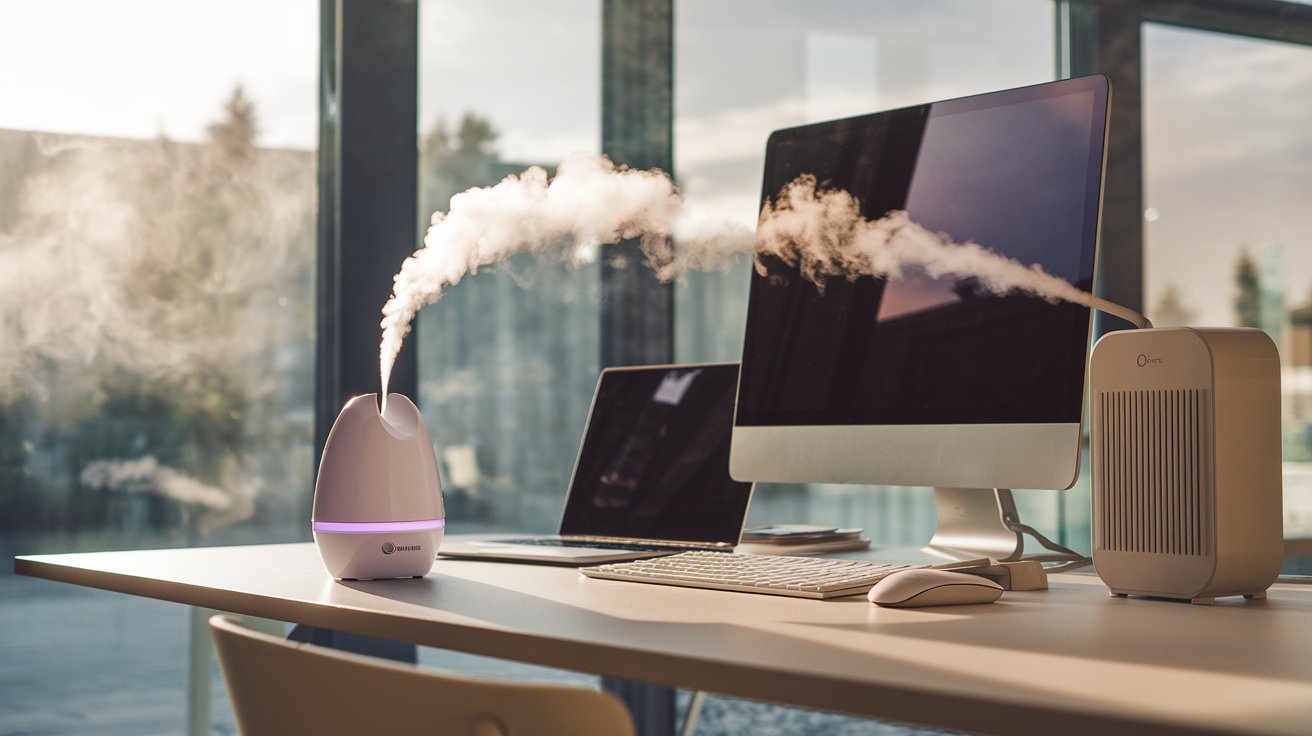Introduction
LED light systems have gained immense popularity due to their energy efficiency and long lifespan, but concerns about their safety—specifically whether they can cause a fire—still linger. While LED bulbs produce less heat compared to traditional lighting options like incandescent bulbs, it’s essential to understand the safety aspects associated with them. The lower temperature of LEDs means they are generally safer, but factors such as faulty wiring or improper use of LED strip lights could still lead to fire risks. It’s crucial to follow safety guidelines and ensure you’re using good-quality LED lights.
Most high-quality LED lights are unlikely to catch fire, as they are designed with heat management in mind. However, using LED string lights in enclosed or poorly ventilated spaces can increase the chances of overheating, especially if they are left on all night. Understanding the benefits of LEDs and following the manufacturer’s instructions are some of the best ways to mitigate this risk, ensuring your home remains safe while reaping the advantages of modern lighting technology.
Key Takeaways
- LED lights are generally safer than traditional lighting as they produce less heat, reducing fire risks.
- Faulty wiring or poor installation can still lead to overheating and potential fires, even with LED lights.
- High-quality LED lights with proper safety certifications are essential to minimize fire hazards.
- Proper heat dissipation and avoiding enclosed spaces help prevent LED lights from overheating.
- Regular inspections of wiring and using appropriate LED types for fixtures can reduce the risk of fire-related accidents.
- Following the manufacturer’s instructions for installation and usage is crucial to ensuring LED lighting safety.
Understanding LED Light Safety: Can They Be a Fire Hazard?
LED light systems are widely used for their energy efficiency and longer lifespan. But many people have questions about whether these lights pose a fire hazard. Understanding how LED technology works and knowing the safety precautions you should follow can help mitigate any risks. LED lights are generally safer compared to traditional incandescent bulbs because they produce less heat, which reduces the risk of fire. However, faulty wiring or poor-quality LED lights can still pose a fire risk, so it’s crucial to use LED lights from reputable manufacturers and follow safety certifications to ensure your home is safe.
Best Practices for Reducing Fire Risks with LED Lights
1. Choose High-Quality LED Lights Selecting LED lights from reputable manufacturers is one of the most effective ways to minimize fire risks. High-quality LED lights come with safety certifications, ensuring they meet stringent safety standards. These lights also offer better heat dissipation, which helps prevent overheating. Always look for certification labels and avoid purchasing cheaper, uncertified LED lights, as they may pose higher risks of fire.
2. Ensure Proper Installation Faulty installation is a leading cause of LED light fires. To prevent this, make sure that your LED lights are installed according to the manufacturer’s instructions. Incorrect wiring or using incompatible fixtures can lead to overheating, increasing the risk of a fire. If you are unsure about how to install the lights, it’s best to hire a professional to avoid potential issues.
3. Pay Attention to Heat Management LED lights generally produce less heat than traditional incandescent bulbs, but they still require proper ventilation to prevent overheating. Poor heat dissipation can occur if the lights are installed in tight or enclosed spaces. To mitigate this risk, make sure your LED fixtures have enough space for air to circulate. Proper heat management is crucial for ensuring both safety and the longevity of the lights.
4. Regularly Inspect Wiring and Fixtures Even with high-quality LED lights, regular inspection of your lighting system is essential. Over time, wiring can degrade, and fixtures may develop faults, both of which can increase the fire risk. Checking for signs of wear and tear or faulty wiring can help catch issues before they become dangerous. If you notice any problems, address them immediately to prevent potential fire hazards.
5. Avoid Overloading Electrical Circuits LED lights are energy-efficient and consume less power than incandescent bulbs, but overloading circuits with too many lights can still be a fire hazard. Make sure your electrical system can handle the number of LED lights you install, and avoid plugging too many lights into a single outlet. Overloaded circuits are a common cause of electrical fires, so proper load management is critical.
6. Follow Manufacturer’s Safety Guidelines Every LED light system comes with specific safety guidelines from the manufacturer. These include recommendations for wattage, installation, and general maintenance. Following these guidelines can significantly reduce the risk of fire and ensure your LED lights function safely. Ignoring the manufacturer’s instructions or using incompatible components can increase the chances of a fire hazard.
Proper Installation to Prevent LED Light Fire Hazards
Installing LED lights correctly is one of the most important safety precautions to avoid fire hazards. Faulty wiring or overloading circuits can lead to overheating, which increases the risk of fire. Always follow the manufacturer’s instructions and consult a professional if you’re unsure about the installation. Quality LED lights with proper safety certifications are designed to be safe, but they still need to be used correctly. Make sure the wiring is not damaged, and avoid placing lights near flammable materials to mitigate the risk of fire.
Why Quality LED Lights Are Essential for Safety
Not all LED lights are created equal, and using high-quality LED lights can significantly reduce the risk of fire. Cheaper, poorly made LED lights may not have the proper safety features, leading to overheating or even short circuits. When choosing LED lights, look for reputable manufacturers and check for safety certifications. High-quality LEDs have better heat dissipation, which is crucial in preventing them from getting hot enough to catch fire. Understanding LED technology can help you make safer choices for your home’s lighting system.
Fire Risks and LED Lights: What You Need to Know
When it comes to fire risks, LED lights are less likely to cause fires than incandescent bulbs because they don’t get hot enough to ignite flammable materials. But that doesn’t mean the risk is non-existent. Factors such as faulty wiring, poor heat dissipation, or improper installation can still increase the risk of fire with LED lights. Understanding LED technology and taking the proper safety measures can minimize this risk. Use LED lights with safety certifications and be sure to follow the manufacturer’s instructions to ensure safe usage.
Case Study: LED Light Fire Risk in an Office Setting
In 2019, a small office in the UK experienced an electrical fire caused by faulty LED lighting installation. The office had recently replaced all incandescent bulbs with energy-efficient LED lights to reduce costs. However, the LED strip lights installed in the building were of low quality and lacked proper safety certifications. Poor heat dissipation and incorrect wiring led to overheating, which eventually caused a short circuit and a fire. Fortunately, the fire was contained, but the incident resulted in significant damage to the electrical system and parts of the office.
Investigators found that improper installation and the use of uncertified LED lights were the primary causes of the fire. This case highlights the importance of using high-quality, certified LED lights and ensuring proper installation to mitigate fire risks. The office has since switched to certified LED lights and implemented regular inspections of their lighting system to avoid future incidents.
The Role of Heat Dissipation in LED Light Safety
LED lights generate less heat than traditional incandescent bulbs, but proper heat dissipation is still crucial for fire prevention. Poor heat management can cause LED fixtures to overheat, especially if they are used for extended periods. To ensure your LED lights stay cool, choose products that come with built-in heat sinks and avoid enclosing them in tight spaces where air can’t circulate. LED lighting safety also depends on the wattage you use, as overloading can lead to overheating and increase the fire risk.
Common Causes of LED Light Fires
Though rare, LED light fires can happen due to improper installation, faulty wiring, or using the wrong type of LED for a specific fixture. It’s essential to understand the types of LED lights available and how they should be installed to prevent issues. Poor-quality LED lights are more likely to cause short circuits, leading to a fire. By using the appropriate type of light for your fixtures and regularly inspecting the wiring, you can reduce the chance of fire-related accidents in your home.
Are LED Lights Safer Than Traditional Lighting in Fire Prevention?
LED lights are known for being energy-efficient and safer than traditional lighting options like incandescent bulbs. The reason behind this is that they produce less heat, making it less likely that they will catch fire. However, there are still potential risks associated with LED lighting, especially if the lights are of poor quality or installed incorrectly. LED lighting safety also includes understanding the different types of LED lights available and ensuring proper heat management. By following safety precautions and using quality LED lights, you can significantly reduce the risk of fire in your home.
LED vs. Incandescent Bulbs: Fire Safety Comparison
When comparing LED lights to incandescent bulbs, LEDs are generally safer in terms of fire risks. Incandescent bulbs produce significantly more heat, which can increase the likelihood of fire, especially if placed near flammable materials. LED lights, on the other hand, produce less heat and are safer to leave on for longer periods. However, it’s still essential to follow proper installation procedures and ensure the LED lights are from reputable manufacturers to maintain this level of safety.
LED Light Safety Tips for Your Home
To minimize fire risks associated with LED lights, there are several safety measures you can follow. First, make sure your LED lights are not left on for extended periods in enclosed spaces where heat can build up. Secondly, avoid using LED lights near flammable materials, as even though they produce less heat, they could still pose a fire hazard under the right conditions. Regularly check for signs of faulty wiring and ensure that the LEDs you purchase are from reputable manufacturers with the necessary safety certifications.
“LED lights are designed to emit less heat, reducing the risk of fire hazards.” – SafetySign.com
How to Use LED Lights Safely: Essential Safety Measures
Using LED lights comes with many benefits, but you should also be aware of the essential safety measures to prevent fire hazards. LED lights are generally safe, but incorrect wiring or using low-quality lights could increase fire risk. It’s important to install LED lights properly, use good quality products, and ensure that they don’t overheat. Additionally, you should make sure that the lights are away from flammable materials. Following these safety tips and using LED lights from reputable manufacturers can help prevent fire risks.
Why Understanding LED Technology Is Important for Fire Prevention
Understanding how LED lights function can help you make safer decisions and reduce fire risks. LEDs convert energy into light much more efficiently than traditional lighting, which means they don’t get as hot. However, issues like poor heat dissipation or faulty wiring can still lead to fire hazards. Learning about the different types of LED lights and how to install them properly can help you prevent any potential fire risks, ensuring your home stays safe.
The Importance of Following LED Manufacturer Instructions
One of the most critical safety precautions is to always follow the manufacturer’s instructions when using LED lights. These guidelines include how to properly install the lights, the appropriate wattage for your fixtures, and how to ensure the lights have adequate heat dissipation. Ignoring these instructions or using the wrong type of LED light can increase the fire risk in your home. Following safety tips provided by reputable manufacturers can greatly reduce the likelihood of LED lights causing fires.
Conclusion
In conclusion, LED lights are generally safe to use in the home, producing less heat than traditional bulbs, which significantly reduces the risk of causing a fire. However, it’s important to be aware that poor-quality LED lights, faulty wiring, or improper installation can increase fire risks. By using good quality LED lights, following the manufacturer’s instructions, and ensuring proper installation, you can enjoy the energy efficiency and long lifespan benefits of LED lighting while keeping your home safe from fire hazards.
While it is unlikely that LED lights will catch fire, safety precautions should always be taken. Make sure to avoid using LED lights in enclosed spaces that lack ventilation and regularly inspect wiring to prevent overheating. LEDs are designed to stay cool, even when left on for long periods, but it’s still best to practice caution to minimize risks. Proper heat management and using high-quality LEDs are key to preventing fires and ensuring the safe use of modern lighting technology.

